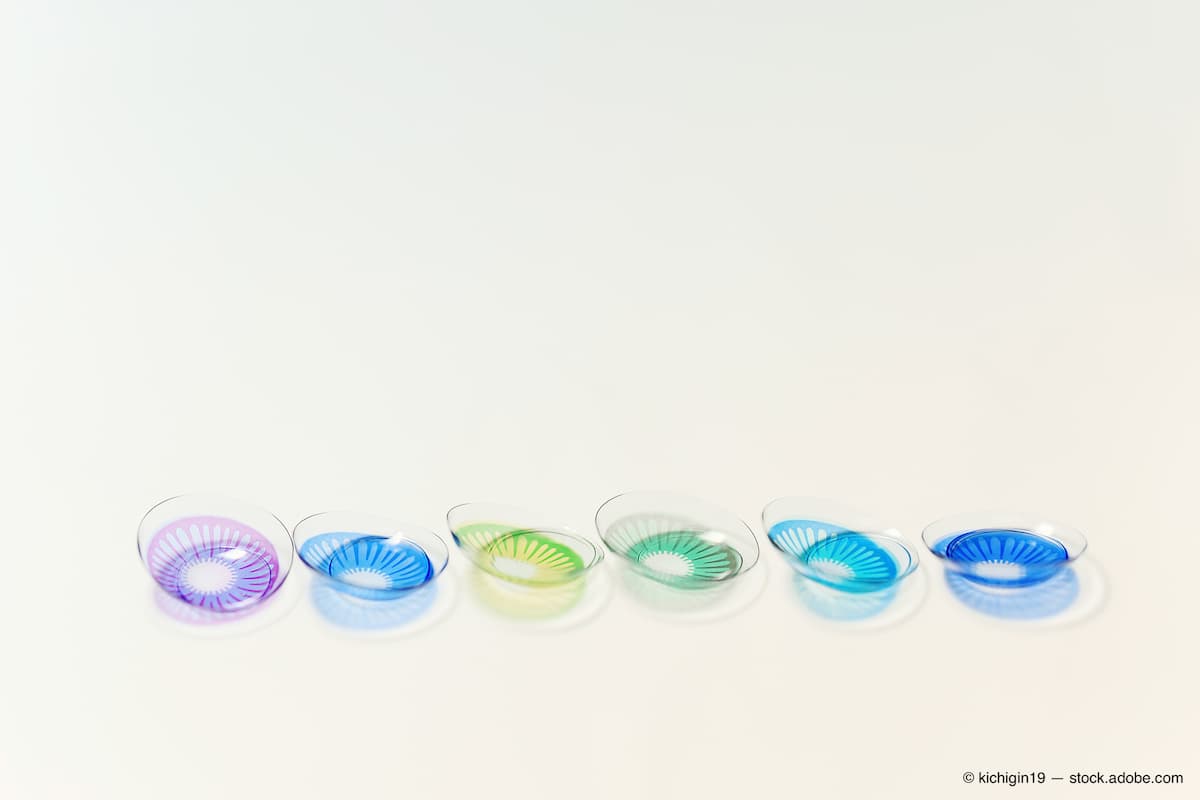Prevent Blindness promoting contact lens safety
Misusing contact lenses can be hazardous. Contact lens wearers also must take extra care when applying and removing eye cosmetics.
Colored contact lenses are popular year-round for people who want to change the color of their iris. Each year at Halloween, there is a surge of people using colored contact lenses to enhance their costumes. (Adobe Stock / kichigin19)

Some 45 million people in the United States wear contact lenses, according to the Centers for Disease Control and Prevention (CDC). Amid this, Prevent Blindness has declared October as Contact Lens Safety Month in an effort to educate patients on the correct methods of contact lens use to avoid serious vision issues.
Unfortunately, the CDC noted in a recent study that more than 80 percent of contact lens wearers reported at least one behavior that put them at risk for a contact lens-related eye infection. According to a news release, incidents include sleeping or napping in lenses, swimming in lenses, and replacing both lenses and lens storage cases at intervals longer than the recommended period.
Colored contact lenses are popular year-round for people who want to change the color of their iris. Each year at Halloween, there is a surge of people using colored contact lenses to enhance their costumes.
Prevent Blindness offers fact sheets, shareable social media graphics, and a dedicated webpage. According to its news release, Prevent Blindness is offering the Contact Lens Safety episode as part of its Focus on Eye Health Expert Series. Prevent Blindness President and CEO, Jeff Todd discusses patient advocacy, and the potential dangers of misusing contact lenses with Thomas L. Steinemann, MD, a professor of ophthalmology at Case Western Reserve University.
The Halloween season also can lead to an increase in the misuse of contact lenses, with consumers using cosmetic or decorative contacts to enhance their costumes. However, many consumers may not be aware that all contact lenses are classified by the FDA as prescription medical devices even when they are not used for vision correction.
According to the news release, the FDA states that contact lenses are not over-the-counter devices. Companies that sell them as such are misbranding the device and violating FTC regulations by selling contact lenses without a prescription. Contact lenses sold without a prescription from unlicensed vendors such as certain online distributors or novelty stores, may be contaminated and/or counterfeit and therefore not safe to use.
Two types of eye infections that may occur from improper use of contact lenses are acanthamoeba keratitis and fusarium keratitis. Symptoms may include eye infection include blurry vision, pain in the eye, sensation of something in the eye, sensitivity to light (photosensitivity), and discharge. Anyone who experiences any of these symptoms should remove the lenses and consult an eye care professional immediately.
Trick or treat?
During Halloween, or at any time of the year, contact lens wearers must take extra care when applying and removing eye cosmetics.
The American Academy of Ophthalmology urges the public to only buy decorative contacts from retailers who require a prescription and sell FDA-approved products. The Academy has warned the public that lenses, which may not be manufactured to meet federal health and safety standards, can cause corneal abrasions and ulcers and can lead to keratitis.
Patients need to know that it is illegal to sell any contact lenses without a prescription in the United States. Only prescription lenses fitted by an eye specialist belong in their eyes.
According to its news release, Prevent Blindness recommends:
- Never share contacts with others or use someone else’s contacts.
- Use aerosol products such as hair spray or deodorant before inserting lenses.
- Insert lenses before applying makeup and remove them before taking makeup off.
- Use water-soluble cosmetics or those that are labeled safe for use with contact lenses.
- Use pressed powder eye shadows. Frosted and glittery eye shadows contain particles that can be harmful if they get into your eye.
- Use an eye shadow base. It can help shadow stay in place and out of the eyes.
- Avoid waterproof mascara and eye makeup containing nylon or rayon fibers. These can flake off, get caught under the contact lens and scratch the cornea.
“Contact lenses can be used safely and effectively to improve vision,” Todd said in a news release. “We ask all contact lens wearers to be diligent and practice good hygiene every day to keep eyes healthy and avoid painful and potentially blinding infections.”
Newsletter
Want more insights like this? Subscribe to Optometry Times and get clinical pearls and practice tips delivered straight to your inbox.